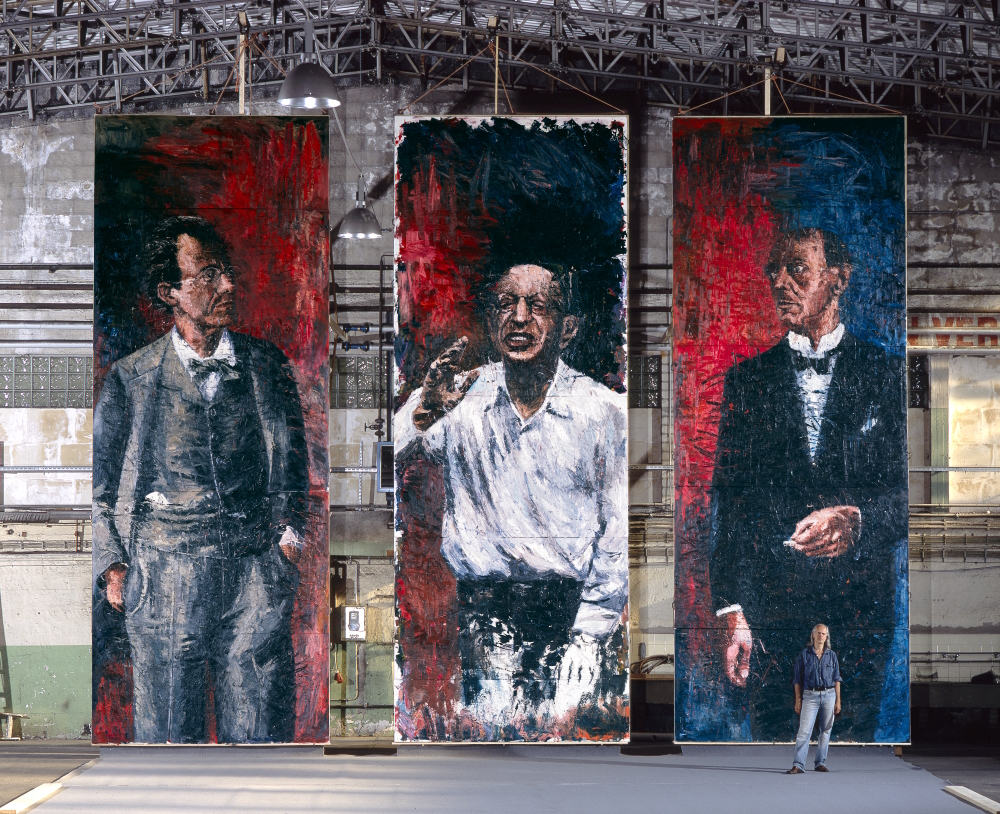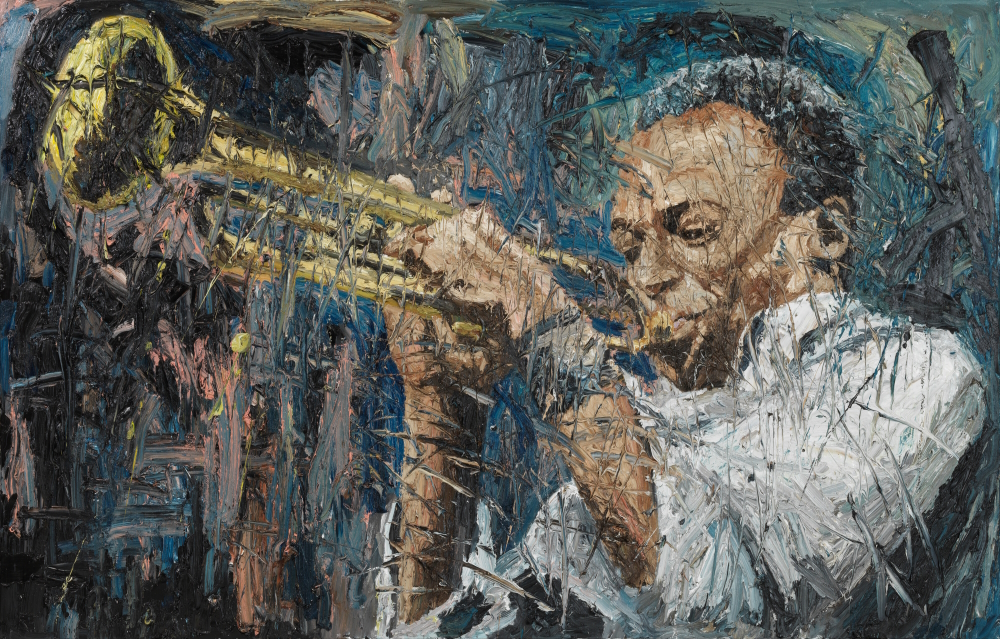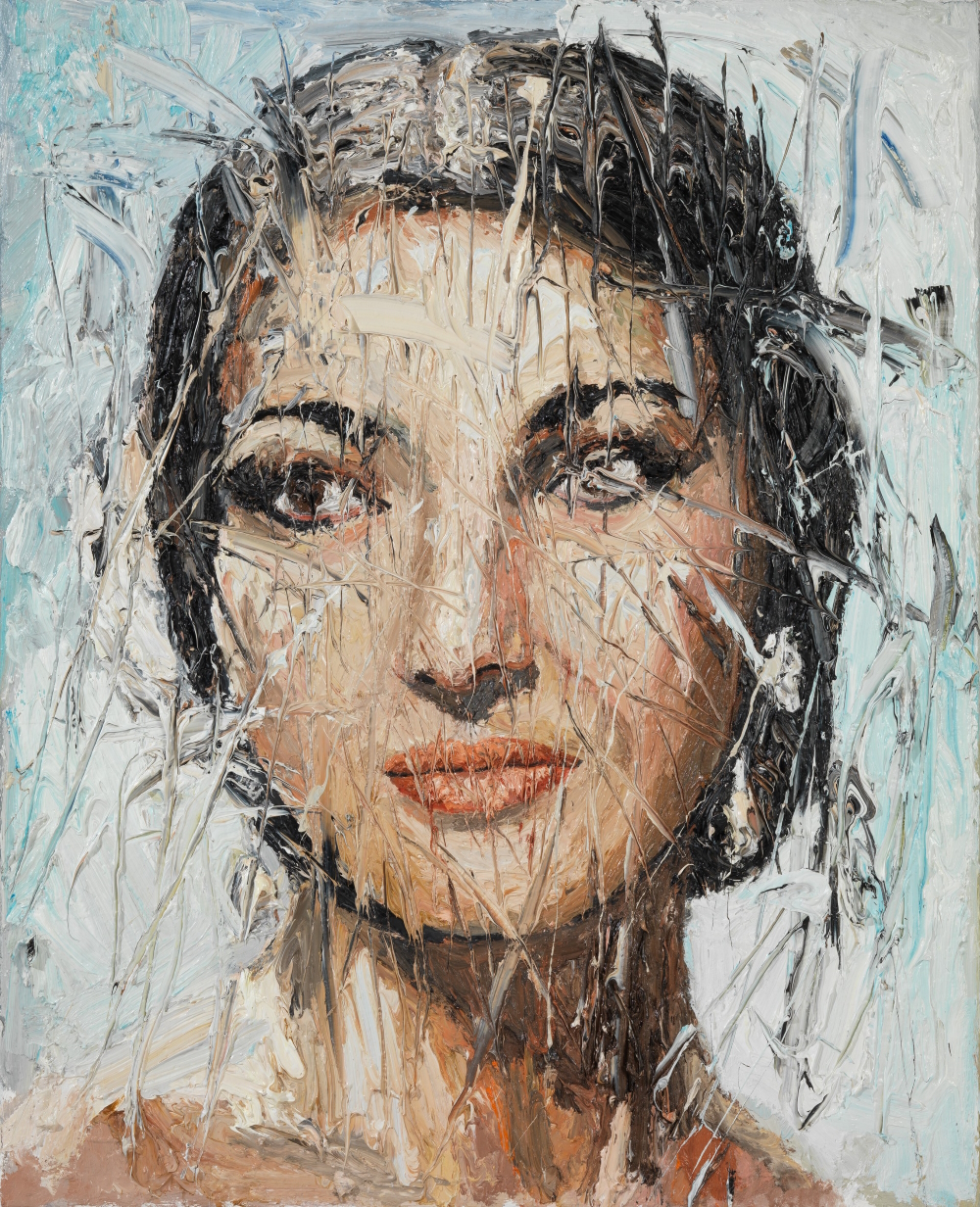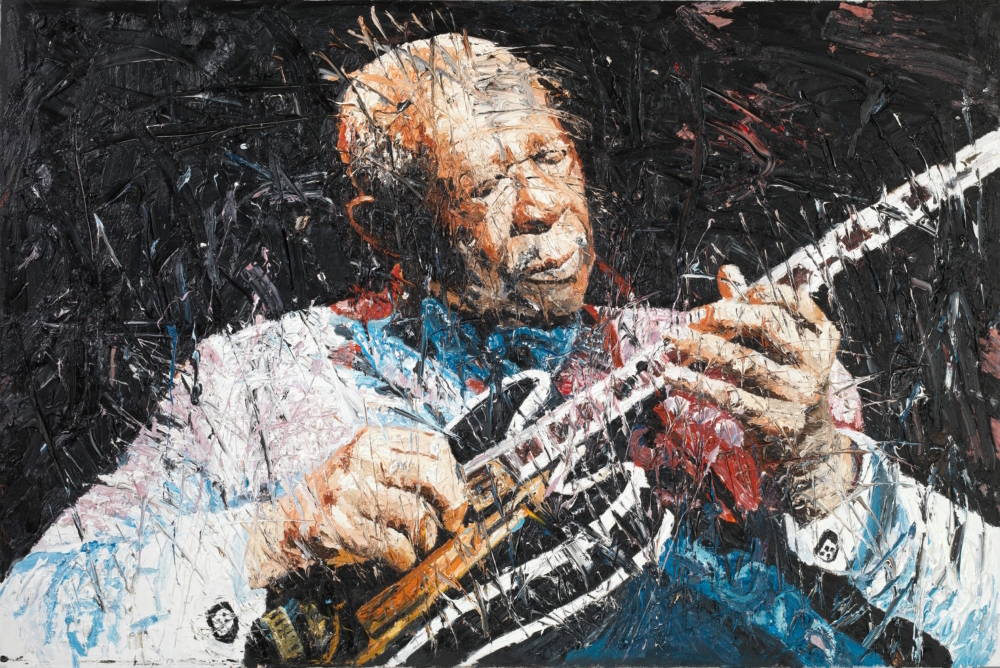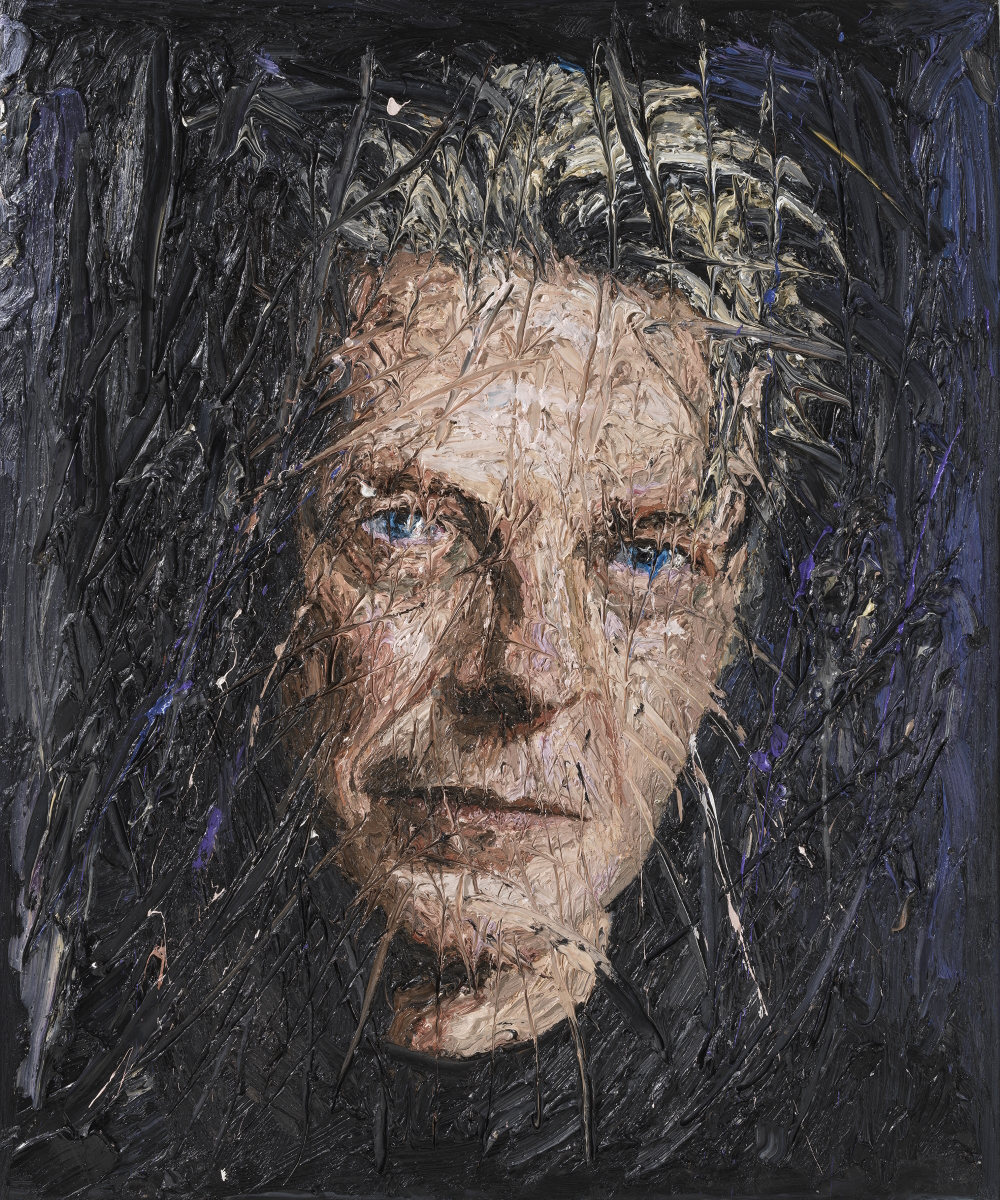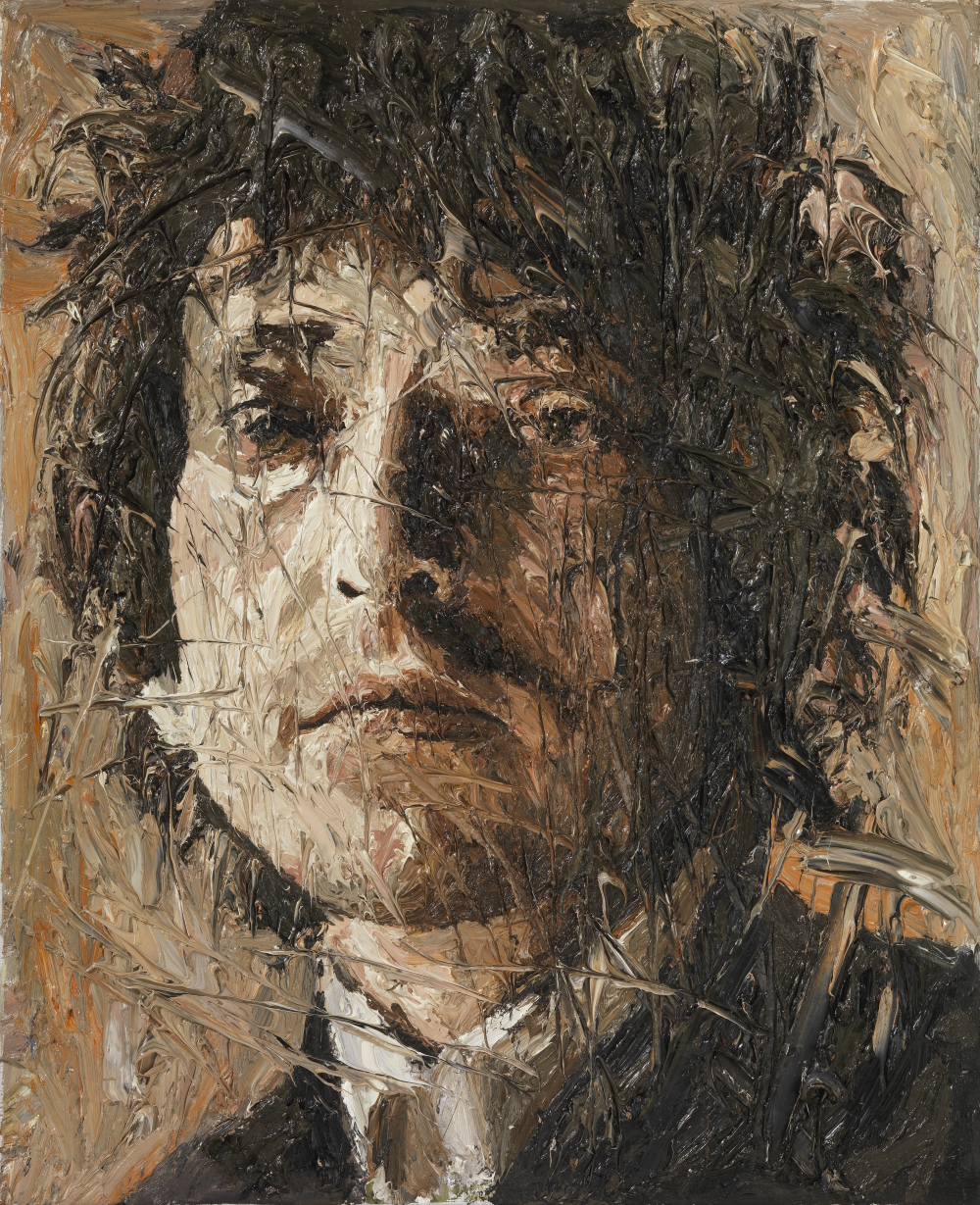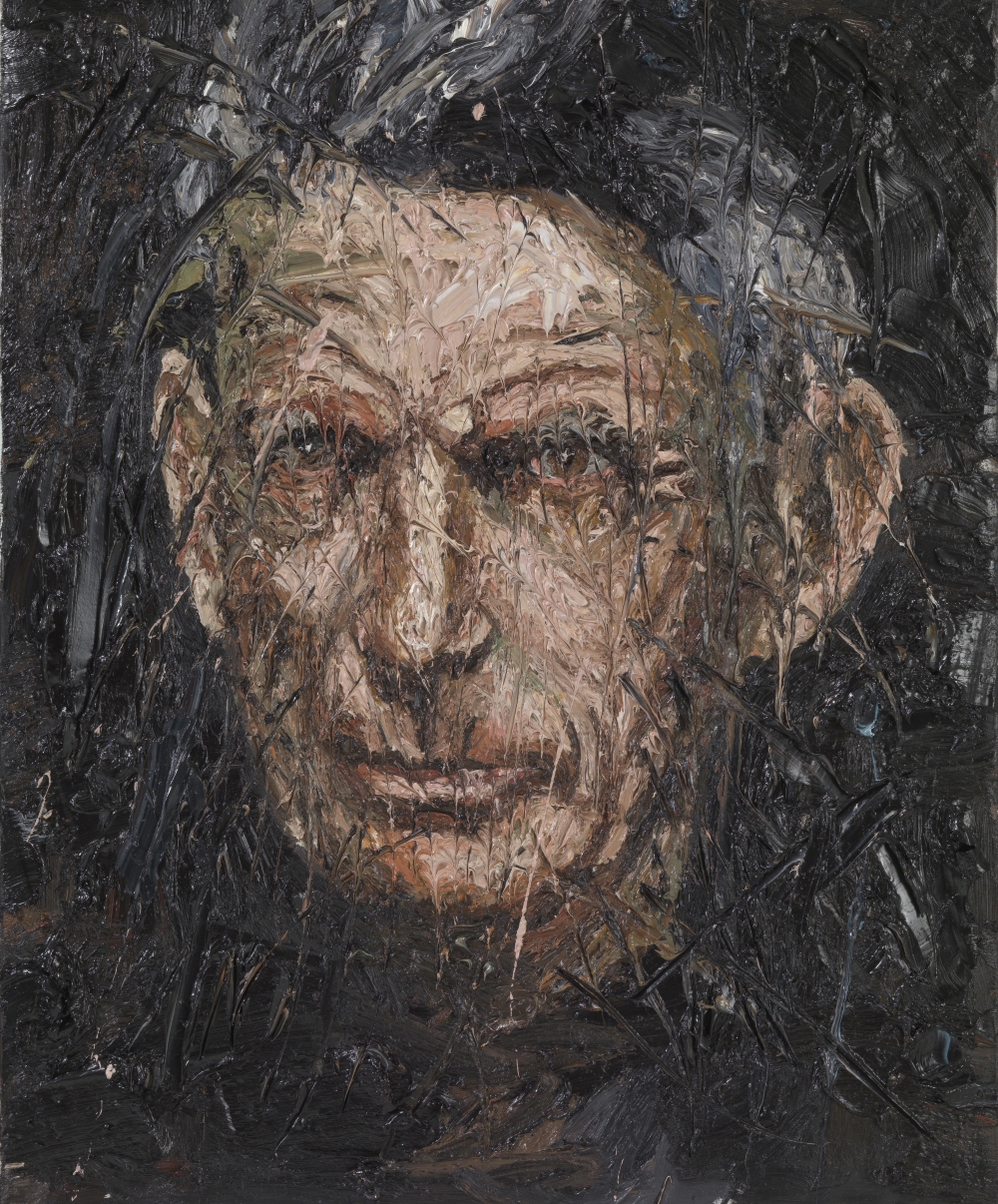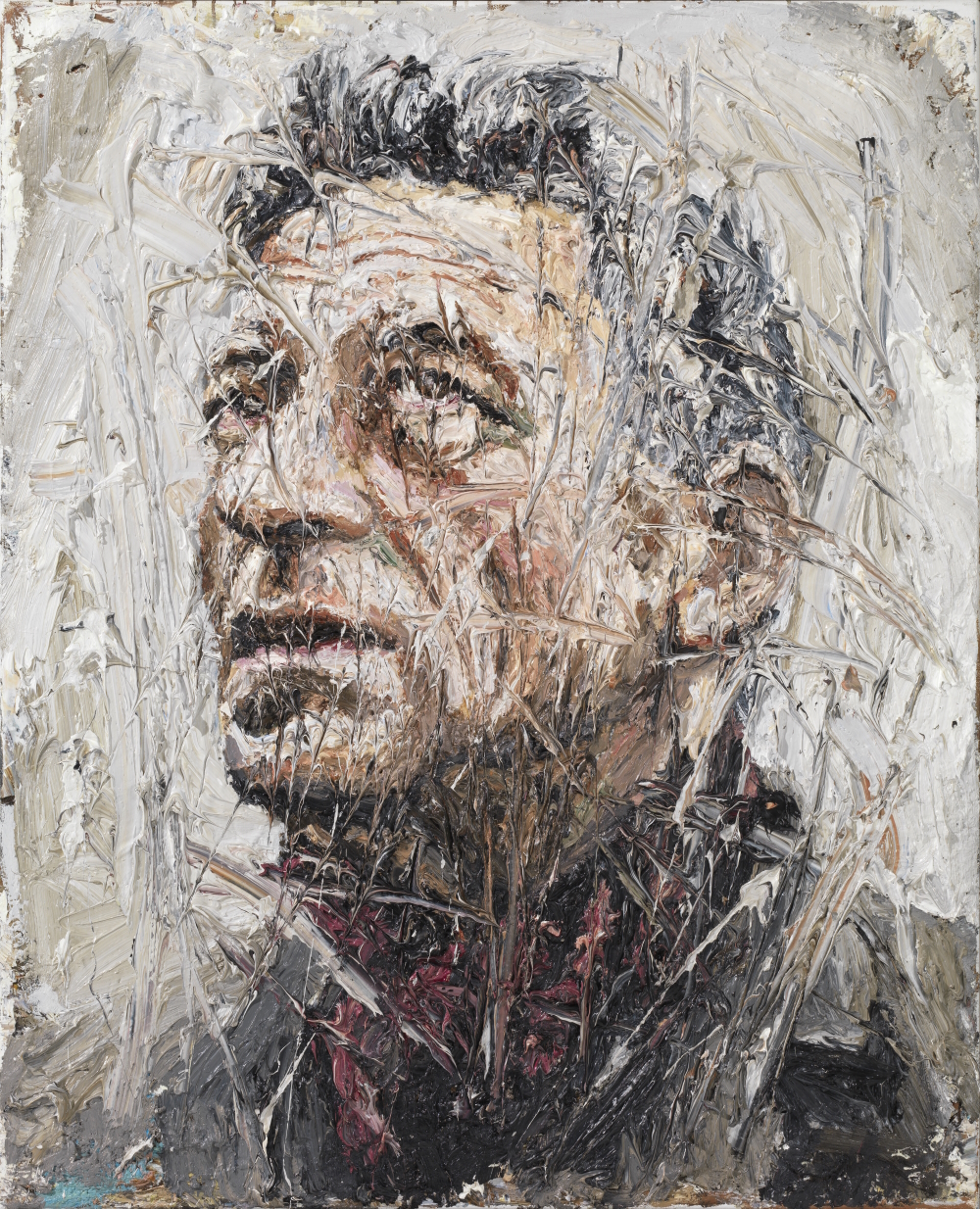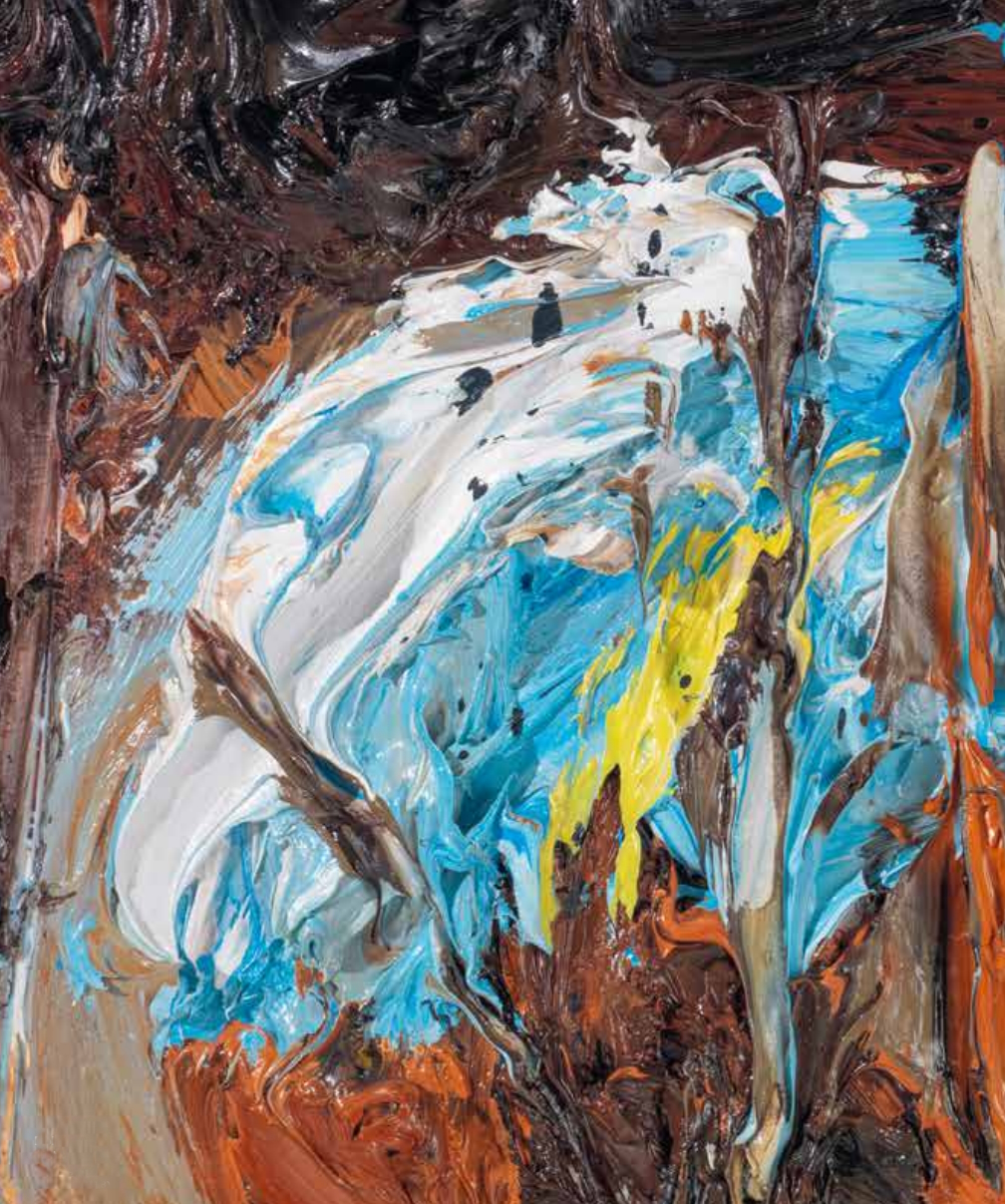Oliver Jordan
one of the most important contemporary European portrait painters
Germany
„Oliver Jordan stands like no other for the pictorial evolution of the portrait in the twenty-first century.“ This judgement by German art historian Dr. Ralph-P. Seippel underlines the exception state of an artist whose works are in public collections and exhibited internationally. ‚OJ‘ has portrayed famous writers, philosophers, athletes, painters, politicians and, because of his personal preference, many musicians. These (often relief-like) representational paintings of Gustav Mahler, Igor Strawinsky and Arnold Schoenberg (all together on a huge triptych), jazz icon Miles Davis, famous opera singer Maria Callas, legendary blues player B.B. King or popular music stars like David Bowie and Bob Dylan, are described by filmmaker/musician/ philosopher Theo Roos „as a moment of coagulated music“.
Oliver Jordan
one of the most important contemporary European portrait painters
Germany
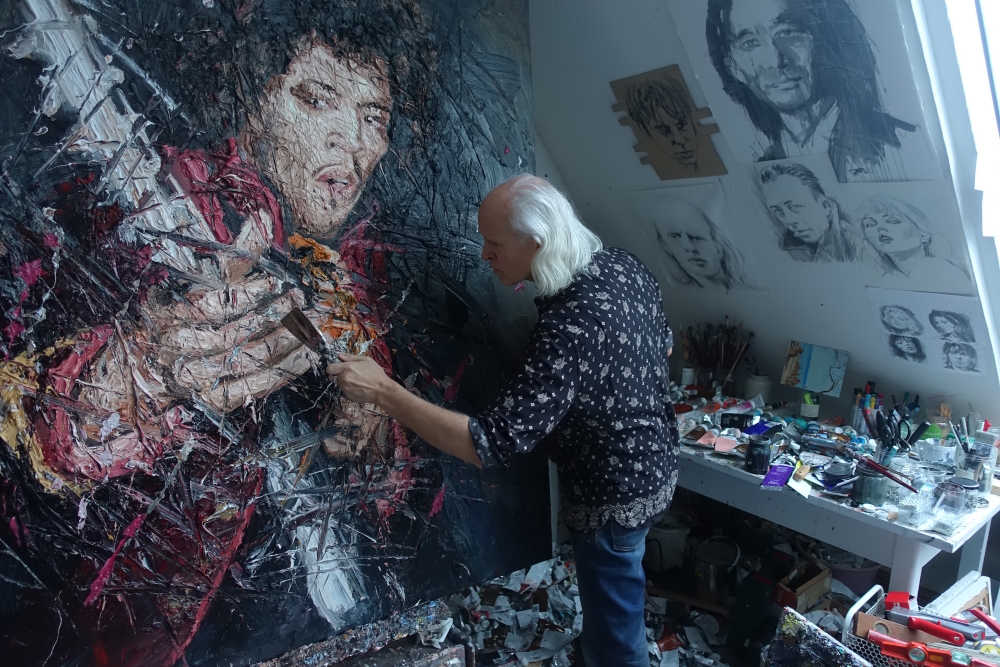
You have to have a lot of self-confidence selling self-made copies of paintings as a twelve year old! But that’s exactly what Oliver Jordan (* 29 March 1958 in Essen, Germany) did, whose exceptional drawing talent was encouraged from an early age on. From 1980 to 1985 he studied free painting at the Academy of Arts and at Joseph Beuys‘ Free International University in Duesseldorf. Despite Beuys‘ famous quote "By going and getting a stretcher and stretching a canvas on it - that's where the mistake begins", Oliver Jordan began to concentrate working on something that was outrageous in 1982: painting portraits – of people as well as of the faces of cities in France, Germany, Italy, Spain and the UK. By doing exactly that this man, who’s interested in literature and philosophy among other topics, redefined realism in painting.
„His technique can be admired on the canvases in his studio: pencil drawings become oil sketches, become reliefs. The different layers are centimetres thick and dissolve into abstract streams of colour when viewed up close. Seen from afar, the whirlpool of colour forms large-format landscapes: realistic, expressive, sensual, rhythmic and literally multi-layered and exhilarating“ (bene-magazin.de). „Common to all pieces is a contrastive dialogue between a precise, formalised structure and liberal, rhythmic deconstruction“, stated art historian and curator Dr. Marc Wellmann from Berlin "Jordan gives his paintings a powerful, masterful treatment. At the same time his motifs project an astonishing visual presence, with an illusion lurking beneath the surface. The impasto technique Jordan applies lends his paintings a sensual character in terms of both surface structure and colour.“
While literary figures, philosophers and visual artists are on display in Volume I of ‚Oliver Jordan: Portraits (256 pages including a text by German writer Heinrich Boell), Volume II features portrait paintings of musicians exclusively. That’s the case for a good reason: they make up the largest part of his oeuvre! Regarding these works of art Dr. Seippel states in Volume II of the 368 pages strong picture book: they „conciliate harmony and disharmony, convert timbres into different shades, impart rhythm through gesture, flow and movement. The conductor’s baton becomes a painter’s palette-knife in your hands; hard, metallic rock music becomes a pictorial engraving, contemporary witnesses become timeless. All the protagonists have one thing in common, however. The individuals chosen – whether they are philosophers, literary figures, visual artists, actors, composers or musicians – have intellectual and artistic biographies that stand for rebellion, insurgency, change, renewal, and, ultimately, for the creation of a more humane world. In the ideal case, the picture and the viewer enter a mutual dialogue, which in the portraits is expanded by those portrayed as well as their work.“ Stephen Petrus, director of Public History Programs LaGuardia and Wagner Archives in New York/Long Island sums it all up in two sentences: "Oliver Jordan's portraits are a timely and necessary antidote to narcissistic 'selfies' in social media. Textured and layered, penetrating and arresting, Jordan's paintings cut beneath the surface of his subjects and bring us into the realm between the abstract and the figurative."
So far, so good those opinions of various art experts. But what does the maker himself tell about these creations in particular that are always developed while listening to music? „Sounds inspire me“, the long-termn collector of vinyl records reveals. „Notes contain a concrete imaginery for me that I translate. For me representational painting is an expression of the happiness of the world!“
Oliver Jordan and his wife Helena live as well as work in an attic flat of an old building in Cologne’s city center. Besides that they own a dependency in Port-Blanc (Bretagne/France).
Interview May 2023
The redefinition of realism in painting: „expressive, sensual, rhythmic, multi-layered and exhilarating“
INTUITION/IMAGINATION
?: How does intuition present itself to you – in form of a suspicious impression, a spontaneous visualisation or whatever - maybe in dreams?
My approach to painting and to my work requires, as a prerequisite for intuitive action and cognition, an alert, receptive, and curious mind, which will never be satisfied with a routine and what is given but is always ready to make room for paradoxes and to start all over again - just like Sisyphus, whom Albert Camus imagined as finding happiness in his task. In the words of (French chemist and microbiologist) Louis Pasteur: “Chance favors the prepared mind.” This is because what we are inclined to call reality, what is active all around us, inside us, and outside of us, in both the tangible and the intangible, and what happens daily, hourly, in the microcosm as well as in the macrocosm, is of a complex nature and, with or without God’s providence, is in its most manifold manifestations nothing less than a miracle. In our subconscious mind we are in communion with these wonders. And every now and then a feeling of connectedness arises out of the flow of events and impinges on our consciousness as a thought, a flash of inspiration.
“Nothing is real, strawberry fields forever.” (The Beatles, 1967)
?: Will any ideas be written down immediately and archived?
One guiding principle for my art comes from the seventeenth-century Chinese landscape painter Tao Chi (also known as Shi Tao), who said “The brush is for saving things from chaos.” In this sense, my combined diary and sketchbook often helps me to get a handle on things. Written and sketched reflections on spontaneous intuitions, flashes of inspiration, dreams, nature, and everyday observations help me to realize and clarify which motif is imposing itself on my consciousness the most strongly and persistently out of the endless stream of events, and can therefore be conveyed in oil paint. It is about a discerning kind of seeing and desiring, just like a love story. Louis Armstrong liked to say “You have to love to be able to play.” I have to love in order to be able to paint.
?: How do you come up with good or extraordinary ideas?
Picasso is known for stating “I do not seek, I find,” and Henry Miller wrote in 'Big Sur and the Oranges of Hieronymus Bosch': “Stay put and watch the world go round.”
What I want to say with these two quotes is that what is beautiful, special, wonderful is all around us all the time; we merely have to open up our senses and let the world in. Have experiences and the ideas will come all by themselves.
?: Do you feel that new creative ideas come as a whole or do you get like a little seed of inspiration that evolves into something else and has to be realized by endless trials and errors in form of constant developments until the final result?
It is a great gift for me to be able to experiment. “Are you experienced?” (Jimi Hendrix, 1967). That also includes constant failure. This failure is perhaps the most important aspect of the creative experience. It teaches humility and prevents megalomania. With an altered consciousness, something lasting can then be created from a seed as well as from a series of attempts.
?: What if there is a deadline, but no intuition? Does the first fuel the latter maybe?
I only recognize a deadline if it is a matter of life or death. Otherwise, I try to act like I have been given plenty of time to submit a picture or complete an exhibition project, so that I do not feel the pressure.
INSPIRATION
?: What inspires you and how do you stimulate this special form of imaginativeness?
Aldous Huxley took an LSD trip so he could explore what it means to be “on” and how it feels when the world opens up for a moment (Doors of Perception) and things come at you. For me, this is a natural state of being, and I have learned over time how to install a filter. When I hear music, I see colors, and when I see colors, I hear music. The world is full of various hues and timbres. Everything is in a constant state of flux. Static and smoothly polished surfaces are an illusion. And paramount over everything else, for me, is looking into someone’s eyes. The painted gaze focuses in on the life that the person knows they will lose one day. Life is an eternal 'Heartbreak Hotel', a constant coming and going, becoming and passing away again. The knowledge of the fragility and transience of our existence is what drives me and inspires me to lend an enduring form to the beautiful and fleeting.
?: How do you filter between ideas that are worthwhile pursuing and bad ones that you just let go of?
See the section “Intuition”, answer to question 2.
?: Does an idea need to appeal to you primarily or is its commercial potential an essential factor?
It would be wrong and insincere to claim that financial aspects play absolutely no role for me in making pictures, but the triggering moment for creating an image is not a consideration of the possible sales figure or commercial potential but the meaningfulness of what I am doing and the spiritual potential of the image. When clients offer me projects that have this potential, and that happens relatively often, I'm happy.
?: Do you revisit old ideas or check what colleagues or competitors are up to at times?
It is always instructive to go back and review old ideas for their potential for the here and now in order to remember how you arrived at a certain insight years ago and what possibilities drove you to go forward with it.
According to the philosopher Hans-Georg Gadamer, we have our most important ideas and insights before the age of 30. After that, we spend a lifetime giving shape to them and making them heard.
My curiosity and consuming interest in the ideas and works of other creative people of our day or from the past automatically leads me to engage with their works of art, literature, music, science, philosophy, architecture, and design. So it is not about competition but rather about gaining knowledge.
CREATIVITY
?: What time or environment best suits your creative work process — for example, a time and place of tranquility or of pressure? Which path do you take from theory or idea to creation?
When I for example make portraits of cities such as Florence, Paris, Madrid ... my wife, a camera, a sketchpad, and an imaginary turtle are my companions. At such times, my studio is wherever I am strolling and halting time. In my studios in Cologne, I like to work in the upper studio with a view over the city and towards the cathedral. This studio is a mixture of a record and book store. The city is within reach and yet far away. The air vibrates from the many different noises: it is a sound all its own and I feel that my studio is a part of this city. This atmosphere buoys me. Every city has its own special sound. This is in sharp contrast with the sound of the sea and the scudding clouds that, freshly soaked with water, waft over my studio in Brittany towards the mainland. I love to retreat there with Helena occasionally and experience a different form of time. It is the tides that set the tone there: ebb and flow.
?: What’s better in the realization process — for example, speed and forcing creativity by grasping the magic of the moment or a slow, ripening process for implementation and elaboration?
From the magic of the moment there develops with my impasto style of painting an internalization of the moment in fast motion, in the form of a constant overpainting and scratching off, analogous to the constant becoming and passing of things. Apply, scrape off, paint over, apply, scrape off, paint over, in rhythm with the tides.
?: Do you have any specific strategies you use when you're feeling stuck creatively?
Because we live in an increasingly manic, hectic and fast-paced era in human history, I by all means need strategies, not necessarily to work my way out of a creative impasse, but to avoid being inundated, absorbed, and distracted by the noise and bustle of everyday life.
The constant presence of social media, the news, tax returns, and administrative tasks always screaming for attention can certainly also lead to a creative block. At such times, it helps me to take walks by the sea, listening to the cries of the seagulls and experiencing technological timelessness and the elemental indifference of nature. Or to listen to music, for example by John Coltrane, Miles Davis, Nick Drake, The 13th Floor Elevators, Hector Villa Lobos, Joao Gilberto, Johann Sebastian Bach ... whose ageless power and energy and its own timeless beauty grounds me again and reminds me where I come from, who I am, and who I want(ed) to be.
?: How important are self-doubt and criticism by others during such a process?
Finding the right balance between self-doubt, creative euphoria, and a critical eye is an art all its own. It certainly helps if you have managed over a long working process to rely on your own particular skills. With this foundation and the ability to be your own harshest critic, it is possible to achieve an objective distance from yourself and your crises.
?: Should a creative person always stay true to him- or herself, including taking risks and going against the flow, or must the person, for reasons of commercial survival, make concessions to the demands of the market, the wishes of clients and the audience’s expectations?
I am a good swimmer and love to swim against the current.
I am not at all interested in the expectations of the market, and never have been. Joseph Beuys claimed: “I feed myself by wasting energy.” When I work, I work without a view to the possible success of the image. Otherwise I would never have painted Rory Gallagher, Nick Drake, Laura Nyro, Janis Joplin, Rocky Erickson (The 13th Floor Elevators), or many others who are not mainstream. Nevertheless, most of my pictures are no longer in my possession. And I am well aware of what kind of images could be marketed even better.
?: How are innovation and improvement possible if you’ve established a distinctive style? Is it good to be ahead of your time, even if you hazard not being understood?
My style is distinctive, and it took me many years, starting with my time at the Duesseldorf Art Academy (1980–85), a time of incessant experimentation, to then ultimately realize by chance (read my remarks in the 'Intuition' section) in 1986 that I had suddenly hit upon something unprecedented. If you look at the first tender shoots of my signature style (Gustav Mahler, 1982), which I overlooked at the time, and then the products of 1986, and compare them with today’s paintings, you will see, even as a layperson, that my work has steadily continued to develop. And I am doing everything in my power to make sure that I can still claim to be doing so in the years to come.
?: When does the time come to end the creative process, to be content and set the final result free? Or is it always a work-in-progress, with an endless possibility of improvement?
I am not interested in the categories 'finished' or 'unfinished'. My paintings are created in the spirit of the tides. Ebb and flow! They emerge in their own rhythm of construction and deconstruction. It is indeed a work-in-progress with endless possibilities.
?: In case of failure or, worse, a creativity crisis how do you get out of such a hole?
I have never experienced any real creative crises. But being prevented from working by daily events is something I know well. It takes iron discipline and loving people like my wife to be able to push forward with my practice.
SUCCESS
?: “Success is the ability to go from one failure to another with no loss of enthusiasm.“ Do you agree with Winston Churchill’s quote?
I agree with the quote from Winston Churchill.
?: Should or can you resist the temptation to recycle a ‘formula’ you're successful with?
A formula always consists of the same ingredients and mixing ratios.
In order to grasp the special features of a human face and the personality of the individual I am faced with, I am always ready to take a fresh look. There is no formula for this looking, for the resting gaze on the silent face. This quiet contemplation and 'the silent reticence of a beautiful face is the homeland of humanity' (Giorgio Agamben).
?: Is it desirable to create an ultimate or timeless work? Doesn’t “top of the ladder” bring up the question, “What’s next?” — that is, isn’t such a personal peak “the end”?
The pursuit of perfection is a part of a mindset freed from thoughts of market compatibility and requires no justification, even if this lofty goal should remain unattainable.
MY FAVORITE WORK:
The most important picture for me is always the picture I am painting at the moment. But if I had to single out one work, then – because of its complex and exciting history and the great effort it took to create it – it would be the triptych for the Konzerthaus Dortmund. Commissioned in 2001, it was unveiled in 2002 on the occasion of the inauguration of the Konzerthaus, on an Open Day that attracted 45,0000 visitors, and today, together with the wonderful Konzerthaus itself, has become a symbol of the city of Dortmund to which I am very attached.
Each 800 × 300 cm painting in the triptych pays tribute to a modernist composer (from left to right: Gustav Mahler, Igor Stravinsky, Arnold Schoenberg.
The painting represents both the high point of my collaboration with the founding artistic director Ulrich Andreas Vogt and the beginning of a series of portraits (232 x 168 cm) for the Konzerthaus. Thanks to the support of the Kulturstiftung Dortmund, Artistic Director Rafael von Hoensbroech, the honorary citizen Jochen Oplaender, and Ulrich Andreas Vogt, a further portrait, of conductor Mirga Grazynité-Tyla, could be unveiled at a concert evening on May 12, 2023. Four more portraits are to follow in time for the 25th anniversary of the Konzerthaus.
